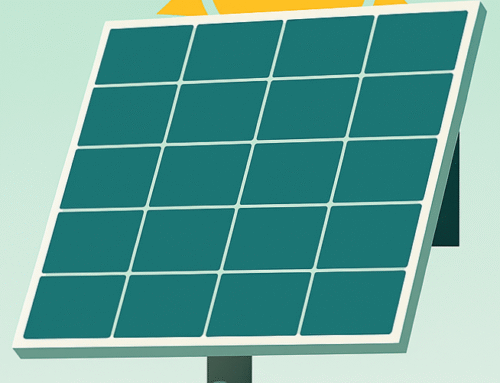What are Solar Micro-grids?
Micro-grids are decentralized energy systems powered by distributed sources (can be fossil fuel-based or renewable). A large number of micro-grids are photovoltaic solar-panel based systems, with small capacities in the range between 100kW to a few MW. These are typically highly localized and serve small geographical areas.
The biggest advantage of micro-grids is that they can work with or without the support of the main grid. If you incorporate energy storage (such as batteries) into the micro-grid, it can become fully self-sustained. Solar Micro-grids use off-grid or hybrid solar inverters to achieve this independence.
How does the system look like?
- Solar panels are mounted together in a solar farm or deployed at the building rooftop.
- The energy generated by the panels is transferred to a centralized controller. This is typically a combination of inverter, battery and net meters, that can manage the distribution process and can switch between multiple input sources.
- The surplus power is deposited into the battery, which gets utilized during the night or during power outages.
Why Solar Micro-grids?
1. 24×7 Power Supply
A micro-grid can provide 24×7 power even when the grid power goes down due to weather conditions, human error, or unforeseen circumstances. The only requirement is having a robust energy storage system. This is extremely valuable during natural calamities, when the main grid may be impacted negatively. For rescue operations, hospitals, storage facilities and so on, micro-grids ensure uninterrupted energy access.
2. Promotes Renewable Energy
As the world moves towards increased use of renewables to meet electricity requirements, large battery systems are required to ensure uninterrupted power supply 24×7. But batteries are extremely costly, and can add up to 40-50% to the overall project costs.
This cost is manageable at a smaller scale. The transition to renewables therefore becomes easier with micro-grids.
3. Accessible
In remote regions where grid infrastructure has not reached, a localized renewable energy-based system can provide consistent supply.
In urban areas, businesses which need stable uninterrupted power supply (such as hospitals) can opt for micro-grids.
Benefits of Solar Micro-Grids
1. Cost-Effective
In remote regions where grid infrastructure has not reached, it is often cheaper and simpler to set up a localized renewable energy-based system. This is a direct result of the investment in solar technologies, due to which these have become cheaper and more efficient.
2. Reliable
A typical micro-grid can incorporate solar panels, wind turbines, biogas, and even diesel generators. So, if the generation from solar is not enough to meet the demand, the controller can easily extract energy from other sources to compensate. This leads to a consistent and reliable power supply.
3. Reaches Rural Communities
Many rural communities (especially in remote areas) do not have access to the main grid. For these communities, localized resources such as solar or wind are available in plenty. With a micro-grid, such communities can harness localized resources to generate cheap, clean and reliable energy.
4. Improves grid stability
By meeting the energy demand of localized geographical areas during peak hours, micro-grids reduce the load on the national grid.
5. Reduction in Electricity Expenses
Solar is cost-effective and eliminates the need for extensive transmission and distribution infrastructure. Consumers can enjoy electricity at lower price as compared to conventional energy sources (after the payback period of 5-7 years).
How Can Solarsphere Help?
Solarsphere’s rooftop solution can turn your community solar rooftops into micro-grids and ensure your Right to Electricity.







